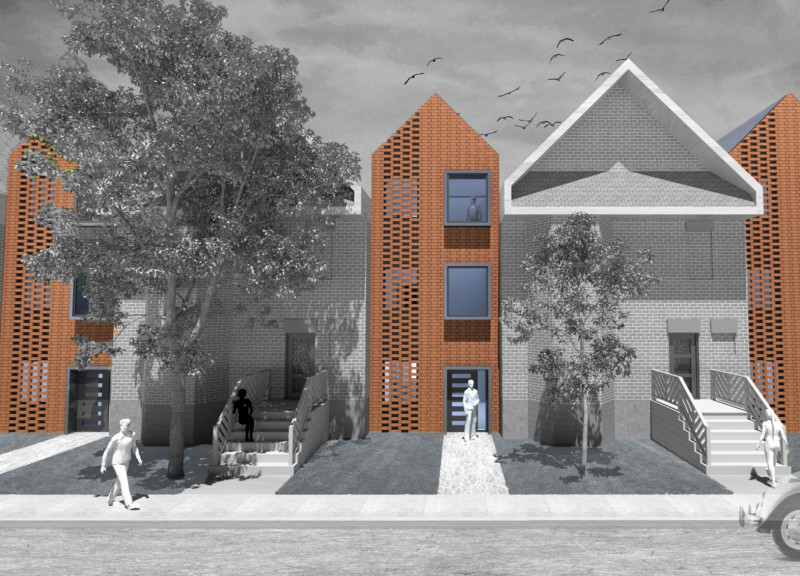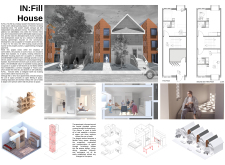5 key facts about this project
IN:FILL HOUSE is a modular housing system designed to meet the need for affordable single-occupant rentals and family homes in Toronto. It cleverly makes use of underutilized parking spaces found within existing residential areas. The project aims to tackle modern housing issues by creating compact, fully independent living spaces that encourage community involvement and address the negative perceptions often linked to affordable housing.
Modular Design and Organization
The layout of IN:FILL HOUSE features micro-apartments arranged around a central plumbed column that extends through three floors. This column not only supports the structure but also redefines how space is used. By doing away with traditional walls, the design promotes a sense of openness while separating different living areas. This configuration allows residents to adapt their spaces according to personal preferences and needs.
Community Integration
A key element of IN:FILL HOUSE is its focus on building connections among residents. Many affordable housing developments can result in feelings of isolation, but this design encourages interaction. By blending with the existing neighborhood, the housing units invite a diverse range of people to live within them. The emphasis on visibility and community engagement helps create a welcoming environment that fosters relationships.
Functional Living Spaces
Each micro-apartment includes a large multifunctional area that serves various purposes, such as living, dining, and working. This flexibility is essential for maximizing the use of space. Residents can transition easily between activities without the need for permanent renovations. Thoughtful planning and design ensure that all areas are practical and can fit individual lifestyles.
The innovative approach taken in IN:FILL HOUSE allows residents to enjoy a sense of freedom in their living spaces. It challenges traditional ideas about urban housing, showing how a well-designed environment can contribute to a thriving community. The project reimagines the possibilities of urban living, encouraging a deeper connection to the spaces people call home.



















































